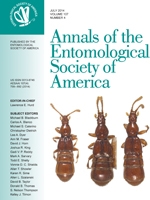The camphor shot borer, Cnestus mutilatus (Blandford) is a nonnative ambrosia beetle first reported in the United States in 1999 at Oktibbeha County in Mississippi. Although, C. mutilatus is a major pest of several trees in its native habitat in Asia, it is not yet a major pest in the United States. However, the range expansion in recent years across the southeastern region indicates that C. mutilatus could be adapting quickly to the new environment, perhaps because of the availability of numerous host trees and suitable environmental conditions that support the population. As the population increases, future outbreaks of C. mutilatus may result in mortality of valuable hosts. Our objective was to identify potential suitable habitats for C. mutilatus in the southeastern United States under changing climate by 2020 and 2060 by examining C. mutilatus preferred conditions, host environmental requirements, precipitation, and temperature projections from an ensemble of general circulation model, and Intergovernmental Panel on Climate Change future climate scenarios. Our results indicated that suitable habitat for C. mutilatus in the southeastern United States will expand slightly under the A1B emission scenarios (i.e., moderate population growth and high-energy use balanced across all sources), and significantly under B1 emission scenarios (i.e., representing moderate population growth and an emphasis on global approaches to economic and environmental stability) by 2060. Whereas the opposite may occur under the A2 scenario (i.e., representing continuously increasing population, regionally focused economic growth, and slower introduction of alternative fuels technology). Nearly half of the parishes in Louisiana and counties in Mississippi will be suitable for C. mutilatus by 2020, under the A2 emission scenarios. However, suitable habitat range could decrease and become fragmented by 2060. These results could be useful in forest management efforts in places where C. mutilatus may become established in the future.
How to translate text using browser tools
1 July 2014
Habitat Suitability Under Changing Climatic Conditions for the Exotic Ambrosia Beetle, Cnestus mutilatus (Curculionidae: Scolytinae: Xyleborini) in the Southeastern United States
Rabiu Olatinwo,
Douglas Streett,
Christopher Carlton
ACCESS THE FULL ARTICLE
It is not available for individual sale.
This article is only available to subscribers.
It is not available for individual sale.
It is not available for individual sale.
ambrosia beetle
camphor shot borer
invasive species





